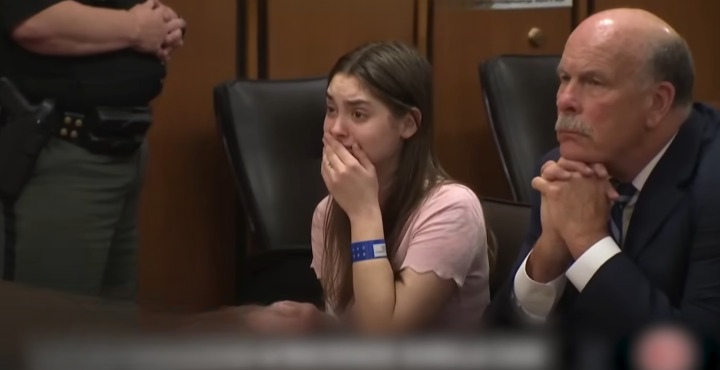The case of Mackenzie Shirilla, a young woman charged with murder following a devastating car crash, has captured national headlines and stirred intense debate about justice, accountability, and responsibility. What began as a tragic accident investigation soon evolved into a courtroom drama, where prosecutors argued the deadly crash was no accident at all but a deliberate act.
As the legal proceedings continue to unfold, many are asking: Who is Mackenzie Shirilla? What exactly happened on that tragic night? And what does this case mean for the future of legal accountability in situations where intent and recklessness intertwine?
This article provides a comprehensive look at the case, including the events leading up to the fatal crash, the legal arguments presented by both sides, community reactions, and the broader implications of the charges.
Who Is Mackenzie Shirilla?

Mackenzie Shirilla was a teenager from Strongsville, Ohio, who, at first glance, appeared to live the life of an ordinary suburban high school student. Friends and classmates described her as social, outgoing, and someone who enjoyed time with peers.
But her name became known far beyond her community after she was accused of deliberately causing a car crash that killed her boyfriend, Dominic Russo, and his friend, Davion Flanagan. What prosecutors allege distinguishes this case from a tragic accident is intent — the argument that Shirilla knowingly and deliberately drove her car into a fatal situation.
The Tragic Crash
The crash occurred in July 2022 in Strongsville, Ohio, when Shirilla lost control of her vehicle. The car slammed into a building at a high rate of speed. Inside the vehicle were Shirilla, her boyfriend Russo, and their friend Flanagan.
- Dominic Russo, just 20 years old, was pronounced dead at the scene.
- Davion Flanagan, 19, also lost his life in the crash.
- Mackenzie Shirilla survived the crash but sustained serious injuries.
At first, investigators treated the incident as a tragic accident, one of many devastating crashes that claim young lives each year. But as evidence mounted, the narrative shifted.
Investigators’ Findings
After a thorough review of the crash site, vehicle data, and witness testimony, authorities reached a chilling conclusion: the crash was not accidental.
Key findings included:
- Black box data from the car showed Shirilla accelerated intentionally in the seconds before impact, rather than attempting to brake.
- No skid marks were found at the scene, which suggested there was no attempt to slow down.
- Witness accounts described tensions between Shirilla and Russo before the crash, raising questions about motive.
With this evidence, prosecutors argued that Shirilla had deliberately used her car as a weapon.
The Charges
In November 2022, a grand jury indicted Mackenzie Shirilla on multiple counts, including:
- Two counts of murder.
- Two counts of felonious assault.
- One count of aggravated vehicular homicide.
- Additional charges connected to reckless endangerment.
Prosecutors asserted that Shirilla’s actions met the threshold for intentional killing, placing her in the rare category of drivers charged not just with vehicular manslaughter, but with murder.
The Trial
When the case went to trial in 2023, it drew intense media coverage. Every detail of Shirilla’s demeanor, background, and testimony was analyzed by both the prosecution and defense.
Prosecution’s Argument
The state presented evidence that Shirilla intentionally accelerated into the crash site with the intent to harm. They emphasized:
- The absence of braking.
- Her alleged conflicts with Russo.
- The cold calculation suggested by her driving pattern.
Prosecutors characterized the act as “murder by vehicle.”
Defense’s Argument
Shirilla’s defense attorneys pushed back, arguing that the crash was a tragic accident, not an intentional act. They cited:
- Her youth and inexperience.
- The possibility of disorientation or panic behind the wheel.
- Lack of a clear motive to intentionally harm her boyfriend and his friend.
The defense urged the court to see Shirilla not as a murderer, but as a teenager whose reckless driving had devastating consequences.
Verdict and Sentencing
In August 2023, Judge Nancy Margaret Russo (no relation to Dominic Russo) found Mackenzie Shirilla guilty on all counts, including two counts of murder. Unlike jury trials, this was a bench trial, where the judge alone rendered the decision.
During sentencing, Shirilla was given life in prison with the possibility of parole after 15 years. The judge described her actions as deliberate and noted the weight of evidence showing intent.
In court, Shirilla broke down in tears as the verdict was read. For many, the moment highlighted the tragic convergence of youth, poor decisions, and irreversible consequences.
Community Reaction
The case rocked the Strongsville community.
- Victims’ Families: Both the Russo and Flanagan families expressed deep grief but also gratitude that the justice system held Shirilla accountable. They described the pain of losing two young men with bright futures.
- Shirilla’s Supporters: Some of Shirilla’s friends and family struggled to reconcile the verdict with the person they knew, insisting she never would have intentionally caused harm.
- Public Debate: The case sparked broader debates on social media, with some agreeing with the murder conviction and others questioning whether intent was sufficiently proven.
Broader Legal and Social Implications
This case is significant not just for those directly involved but also for how it may shape legal discussions in the future.
- Redefining Intent in Vehicular Crimes
Traditionally, fatal car crashes caused by recklessness are charged as vehicular manslaughter or homicide. Charging murder requires proof of intent. The Shirilla case sets an important example of prosecutors pushing boundaries in applying murder statutes to driving incidents. - Youth, Recklessness, and Responsibility
Shirilla was only 17 at the time of the crash. The case raises difficult questions: How should the justice system balance youthful mistakes against catastrophic outcomes? At what point does recklessness become murder? - The Role of Technology
The black box data from Shirilla’s car was crucial in shaping the case. This highlights the growing role of technology in legal investigations, where digital evidence can make the difference between accident and intent. - Impact on Communities
Beyond legal precedent, cases like this leave scars on communities. Two young lives were lost, a third life was effectively destroyed by imprisonment, and countless family members, friends, and neighbors continue to grieve.
Remembering the Victims
While much of the media attention has focused on Shirilla, it is important to remember the victims:
- Dominic Russo: Remembered as a kind, adventurous young man who brought joy to those around him. His family described him as “a soul gone too soon.”
- Davion Flanagan: Known for his sense of humor and dedication to friends, he was celebrated for his loyalty and uplifting spirit.
Community vigils, fundraisers, and memorials have continued to honor their memories.
Conclusion
The Mackenzie Shirilla case stands as a sobering reminder of how a single decision can alter countless lives. What began as a late-night drive ended with two young men dead, a teenager sentenced to life in prison, and a community forever changed.
While the legal system has rendered its verdict, the emotional and ethical questions remain. Was this justice, or a punishment too harsh for a teenager? Did Shirilla truly intend to cause harm, or was this a catastrophic act of recklessness?
For now, what is certain is that two families continue to grieve, one young woman faces decades behind bars, and a community struggles to heal. The case of Mackenzie Shirilla will continue to be studied not just as a tragic story, but as a pivotal example of how courts interpret intent, responsibility, and justice in modern times.


